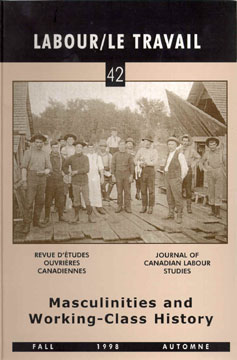Abstract
In the years following World War II, the Newfoundland fishing economy was transformed from a predominantly inshore, household-based, saltfish-producing enterprise into an industrialized economy dominated by vertically-integrated frozen fish companies. The state played a critical role in fostering this transformation, and one aspect of its involvement was the creation of a "modern" fisheries workforce. Although women's labour had historically been an integral part of the inshore fishery, state planners assumed that women would withdraw from direct involvement in economic activities. Indeed, the male bread-winner model, the dominant gender ideology of western culture (but not of Newfoundland outport culture at the time), was embedded in state economic policies for the Newfoundland fishery in the post-World War II period. Training men to become more efficient, technologically-trained harvesters and offshore trawler workers became central concerns. Although the attempts to recruit young men as trawler crews were not entirely successful, this and the other examples of the government's mediating role helps illustrate the complexity of economy, state and gender ideology, all involved in the construction of a new fisheries workforce.
Résumé
Dans les années qui suivirent la Second Guerre mondiale, l'économie de la pêcheà Terre-Neuve passa d'une industrie côtière fondée sur les entreprises familiales de production de poissons salés à une économie industrialisée marquée par la concentration verticale des compagnies de poissons surgelés. En encourageant cette transformation, l'État joua un rôle primordial en intervenant dans la création d'unemain d'œuvre de pêcheurs «modernes.» Bien que le travail des femmes fasse historiquement partie intégra des pêcheries côtières, les planificateurs de l'Étatprésumèrent qu'elles se retireraient de cette activité économique. En fait, le modèle de l'homme pourvoyeur, l'idéologie de genre prédominante dans la culture occi' dentale — mais non dans les ports de mer terreneuviens de l'époque — étaient inscrits dans les politiques économiques canadiennes concernant les pêcheries terreneuviennes d'après-guerre dont le but principal était de former des chalutiers et des pêcheurs plus efficaces. Quoique les efforts pour recruter les jeunes hommes dans des équipes de chalutiers n'eurent pas grand succès, la politique gouvernmentale d'après-guerre est un des exemples de la complexité des rapports entre l'économie, l'Etat et les genres, tous impliqués dans la construction d'une nouvelle main d'œuvre de pêcheurs.
